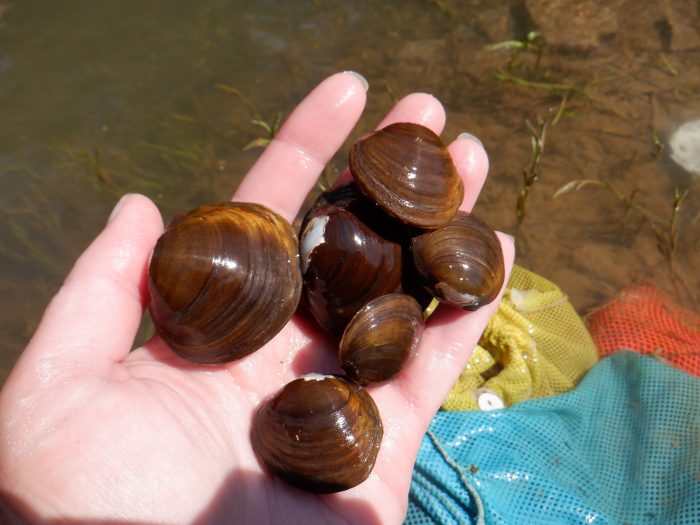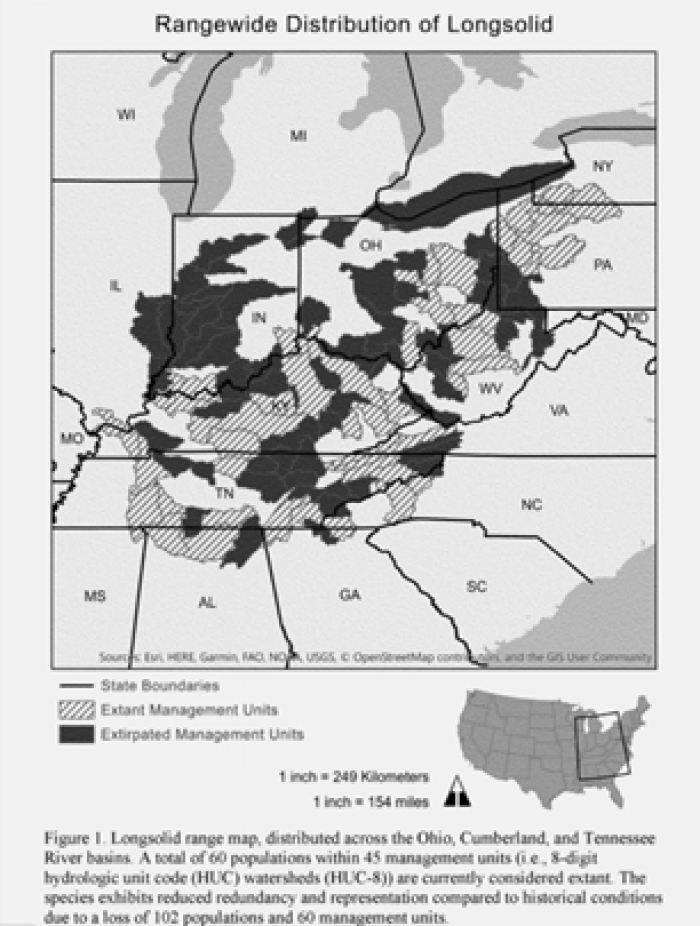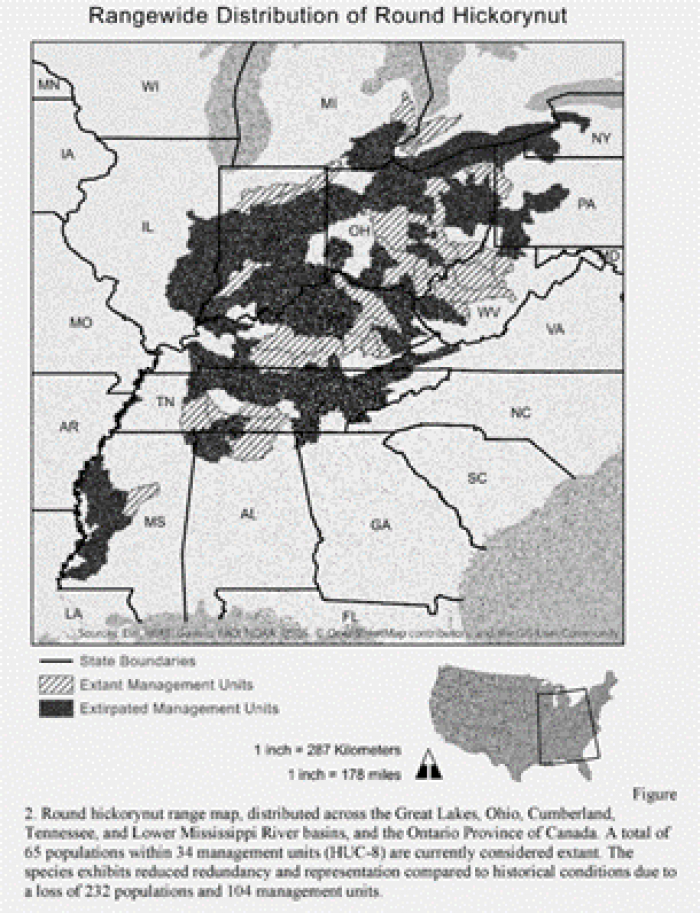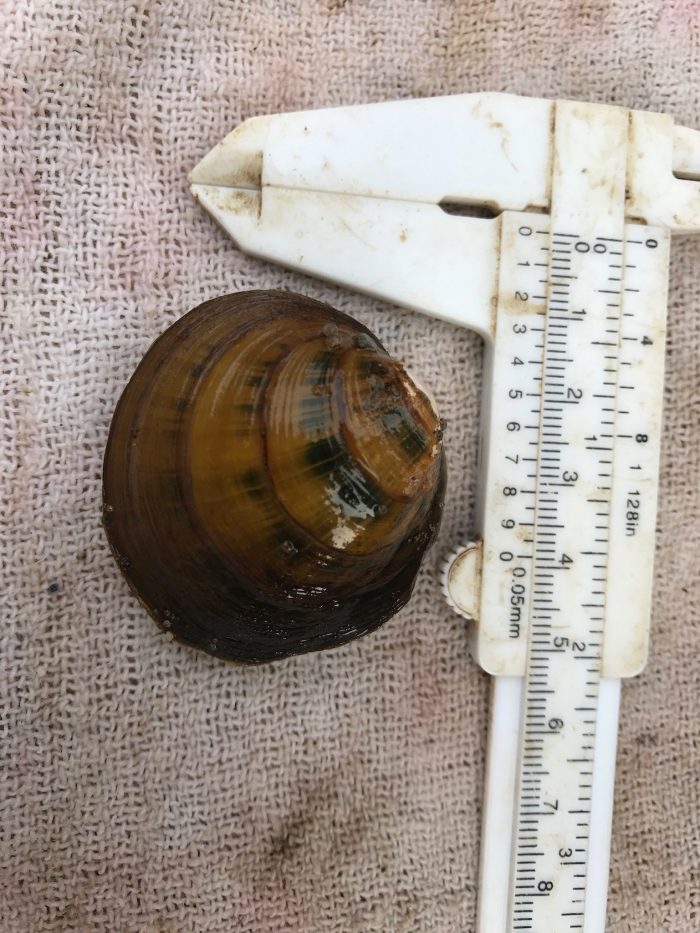Longsolid and Round Hickorynut Mussels Proposed Federally Threatened

On September 29, 2020, the United States Fish and Wildlife Service (USFWS) proposed the federal listing of the Longsolid (Fusconaia subrotunda) and Round Hickorynut (Obovaria subrotunda) mussels as Threatened. The proposed ruling also lists critical habitat for both species in several states, including approximately 1,115 river miles in AL, KY, PA, TN, VA, and WV for the Longsolid and approximately 921 river miles in AL, IN, KY, MS, OH, PA, TN, and WV for the Round Hickorynut.
Longsolid Mussel

The Longsolid is a freshwater mussel in the Unionidae family. The shell of this medium-sized mussel (up to five inches long) is thick and light brown, darkening with age. The Longsolid is currently found in the Ohio, Cumberland, and Tennessee River basins within AL, KY, NY, NC, OH, PA, TN, VA, and WV. It is considered extirpated from GA, IN, and IL, is listed as a state endangered species in OH, and listed as various levels of concern, imperilment, or vulnerability by AL, KY, NC, PA, TN, VA, and WV. Overall, the Longsolid is presumed extirpated from 63% of its historical range. Further, of its current populations, 5% are estimated to be highly resilient, 15% are estimated to be moderately resilient, and 48% are estimated to have low resiliency.
Round Hickorynut

The Round Hickorynut is also a member of the Unionidae family. The shell is thick, solid, round (nearly circular), and small-sized, up to three inches long. Round Hickorynut adults are greenish to dark brown and sometimes black in color. The Round Hickorynut is currently found in the Great Lakes, Ohio, Cumberland, Tennessee, and Lower Mississippi River basins within AL, IN, KY, MI, MS, OH, PA, TN, and WV. It is considered extirpated from GA, IL, and NY and has various state levels of concern, imperilment, or vulnerability in AL, IN, KY, MI, PA, TN, VA, and WV. It is also listed as an endangered species in the Canadian Province of Ontario. Overall, the Round Hickorynut maintains representation from historical conditions; however, USFWS considers it to be at immediate risk of losing 40% of its representation due to its small, isolated populations under high degrees of anthropogenic threats. Of its current populations, 6% are estimated to be highly resilient, 16% are estimated to be moderately resilient, and 45% are estimated to have low resiliency.
Threats to Both Species

Both species were once much more common, occasionally abundant, components of the mussel assemblages in the rivers and streams across much of the Eastern United States. Generally, the three primary threats affecting both species are habitat loss or degradation, invasive and nonnative species, and negative effects associated with small population sizes. Specifically, these impacts include urbanization, agricultural activities, transportation influences such as channelization and dredging, contaminants, dams and barriers, changing climate conditions, resource extraction, forest conversion, the introduction of nonnative species such as Asian clams and Zebra mussels, and small isolated populations that may primarily be comprised of adult individuals and show little to no recruitment.
Mussel Services
The current USFWS ruling will alter designations for some streams in some states, such as WV. For more information on how this may impact your current or future projects, please contact EnviroScience’s Marine Group. Our staff includes seven permitted malacologists with full commercial dive capabilities qualified to conduct freshwater mussel surveys from Alabama to New York.
Click here for the full ruling, which is open to public comment until December 28, 2020.